Abstract
Declaration
Copyright Statement
Acknowledgements
List of Acronyms
List of Symbols
Introduction
Motivation and Aims
Thesis Statement and Hypotheses
Contributions
Papers and Workshops
Papers
Workshops
Thesis Structure
Summary
Spiking Neural Networks (SNNs)
Biological Neural Components
Neuron
Neuronal Signals
Signal Transmission
Modelling Spiking Neurons
Neural Dynamics
Neuron Models
Synapse Model
Synaptic Plasticity
Simulating Networks of Spiking Neurons
Software Simulators
Neuromorphic Hardware
Neuromorphic Sensory and Processing Systems
Summary
Deep Learning
Brief Overview
Classical Models
Combined Approaches
Convolutional Networks
Network Architecture
Backpropagation
Activation Function and Vanishing Gradient
Autoencoders (AEs)
Structure
Training
Restricted Boltzmann Machines (RBMs)
Energy-based Model
Objective Function
Contrastive Divergence
Summary
Off-line SNN Training
Introduction
Related Work
Siegert: Modelling the Response Function
Biological Background
Mismatch of The Siegert Function to Practice
Noisy Softplus (NSP)
Generalised Off-line SNN Training
Mapping NSP to Concrete Physical Units
Parametric Activation Functions (PAFs)
Training Method
Fine Tuning
Results
Experiment Description
Single Neuronal Activity
Learning Performance
Recognition Performance
Power Consumption
Summary
On-line SNN Training with SRM
Introduction
Related Work
Spike-based Rate Multiplication (SRM)
Training Deep SNNs
Experimental Setup
AEs
Noisy RBMs
Spiking AEs
Spiking RBMs
Problem of Spike Correlations
Solution 1 (S1): Longer STDP Window
Solution 2 (S2): Noisy Threshold
Solution 3 (S3): Teaching Signal
Combined Solutions (S4)
Case Study
Experimental Setup
Trained Weights
Classification Accuracy
Reconstruction
Summary
Benchmarking Neuromorphic Vision
Introduction
Related Work
NE Dataset
Guiding Principles
The Dataset: NE15-MNIST
Data Description
Performance Evaluation
Model-level Evaluation
Hardware-level Evaluation
Results
Training
Testing
Evaluation
Summary
Conclusion and Future Work
Confirming Research Hypotheses
Future Work
Off-line SNN Training
On-line Biologically-plausible Learning
Evaluation on Neuromorphic Vision
Closing Remarks
Detailed Derivation Process of Equations
Detailed Experimental Results

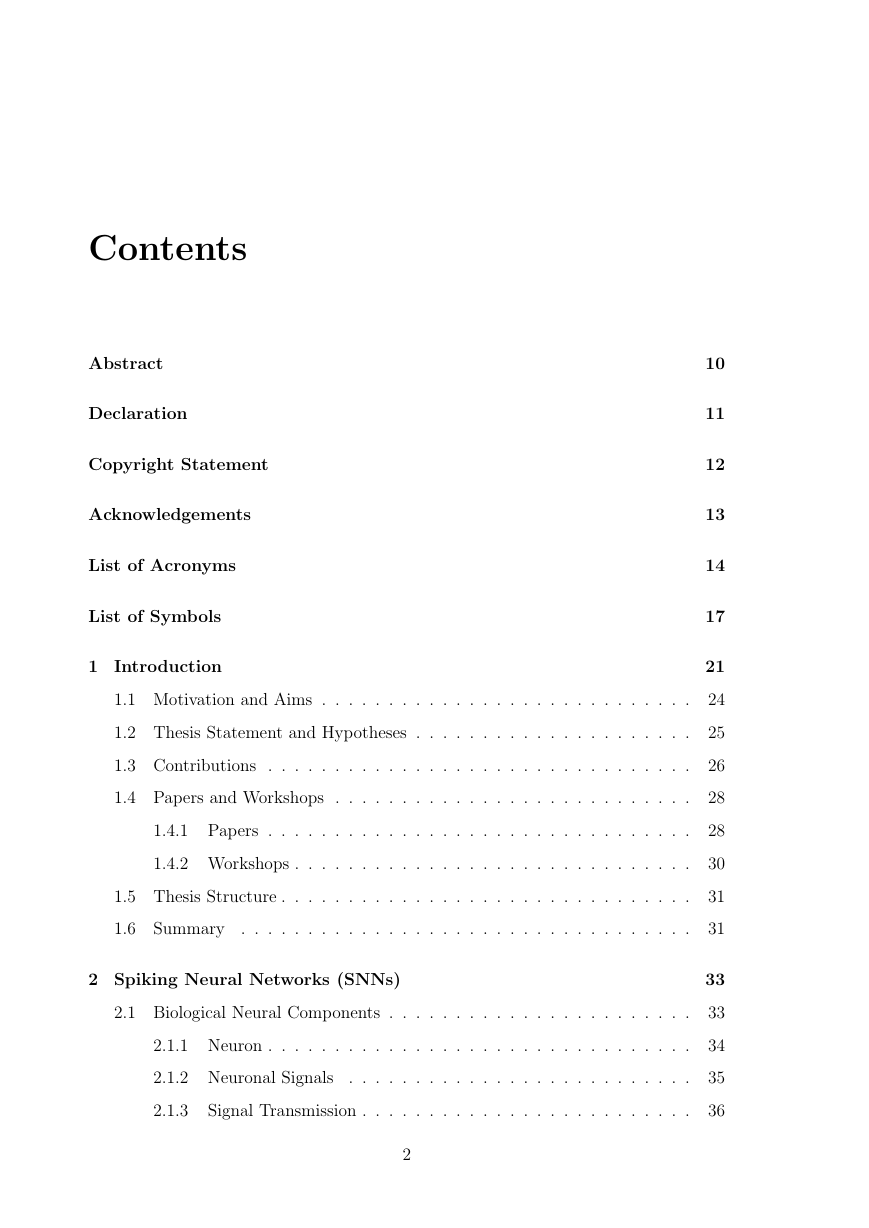
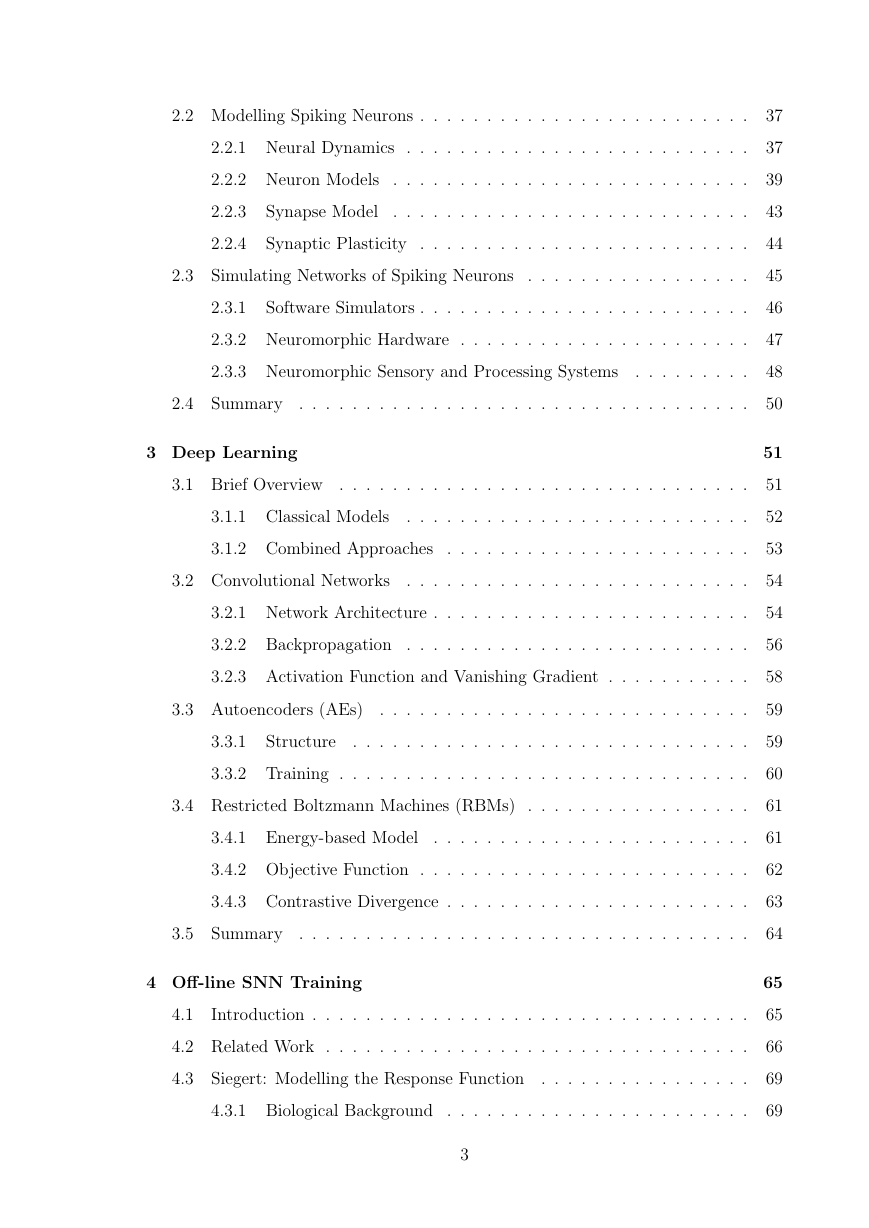

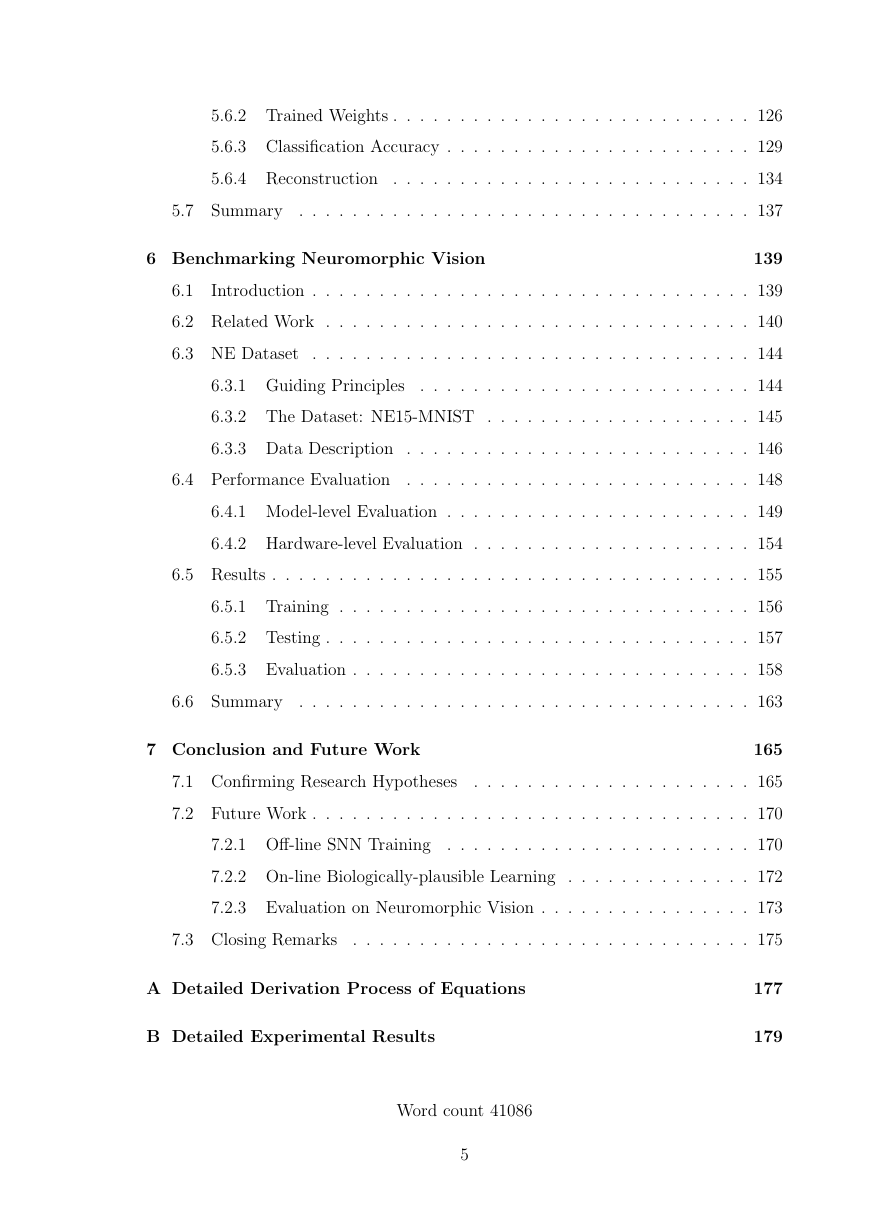

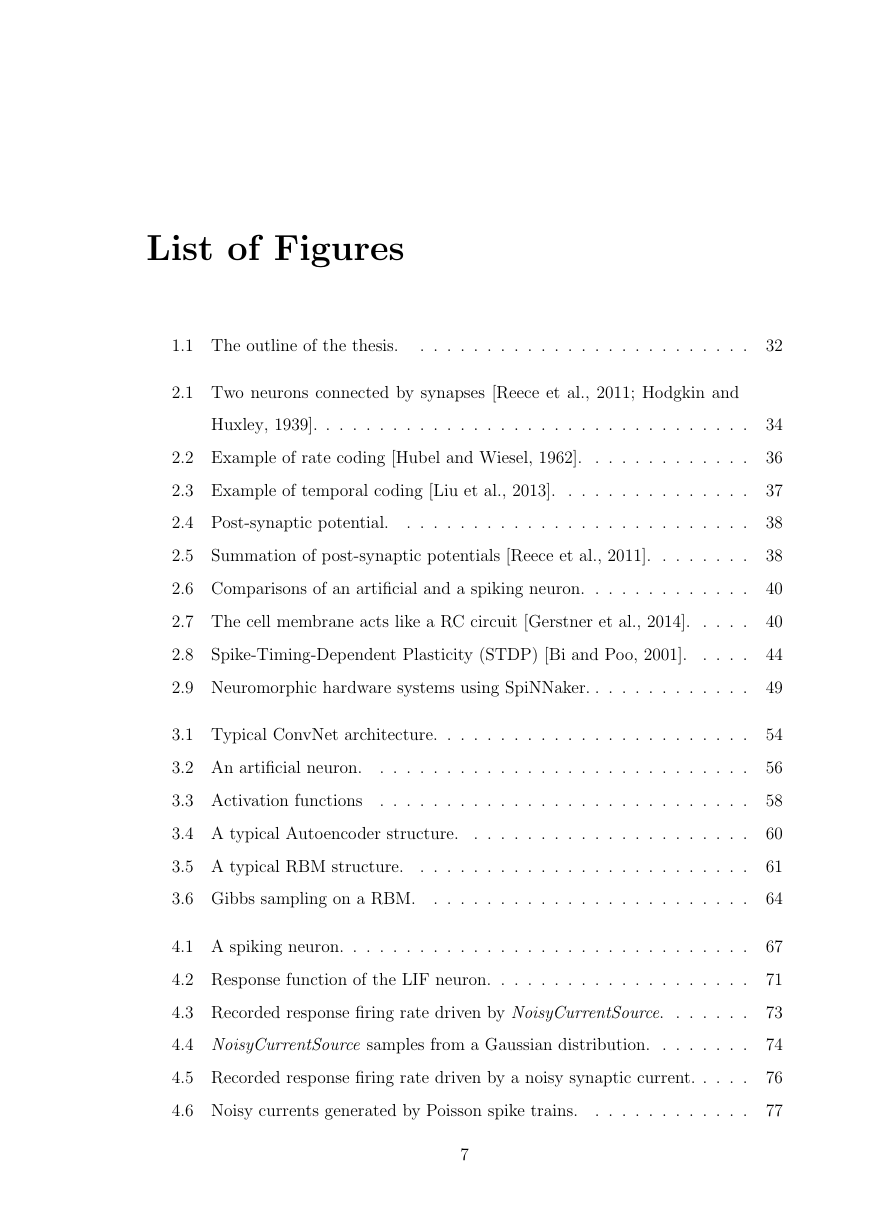
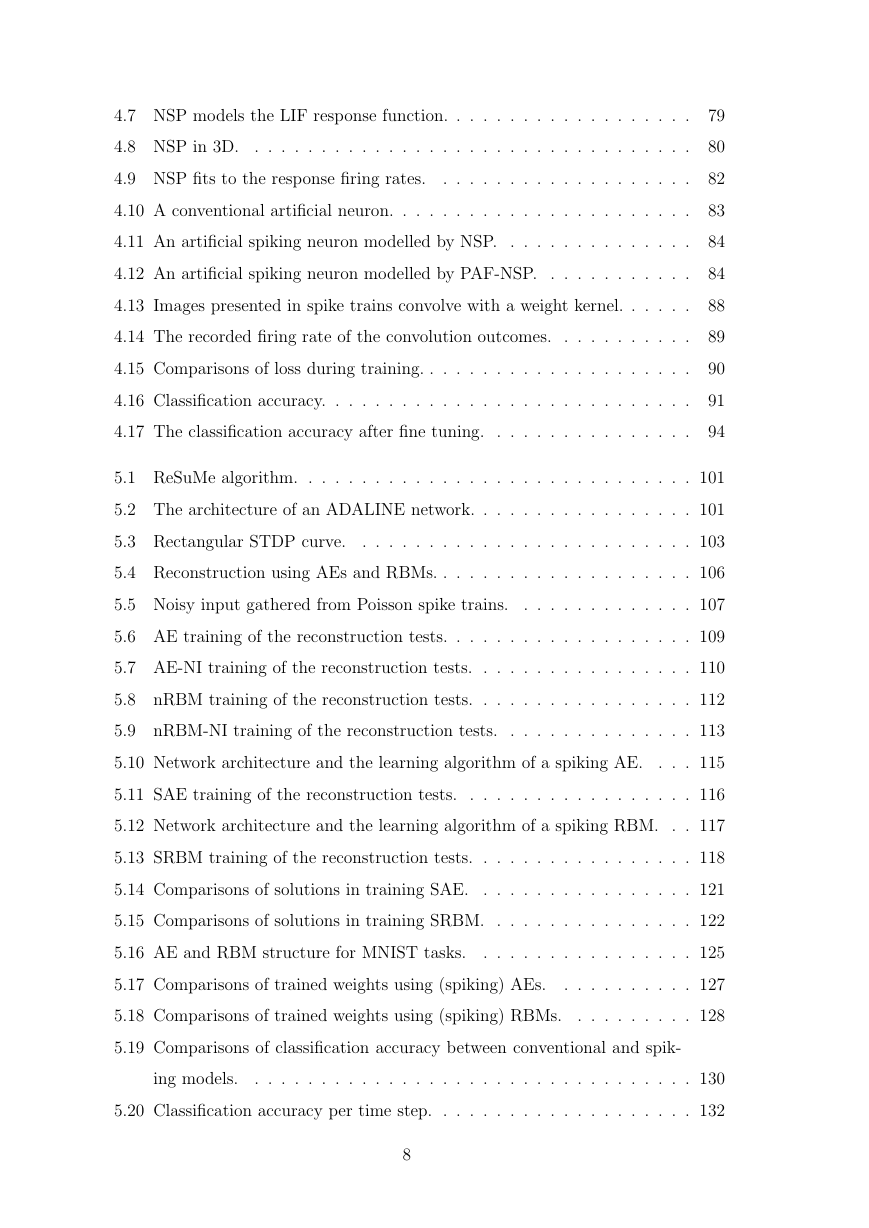








 2023年江西萍乡中考道德与法治真题及答案.doc
2023年江西萍乡中考道德与法治真题及答案.doc 2012年重庆南川中考生物真题及答案.doc
2012年重庆南川中考生物真题及答案.doc 2013年江西师范大学地理学综合及文艺理论基础考研真题.doc
2013年江西师范大学地理学综合及文艺理论基础考研真题.doc 2020年四川甘孜小升初语文真题及答案I卷.doc
2020年四川甘孜小升初语文真题及答案I卷.doc 2020年注册岩土工程师专业基础考试真题及答案.doc
2020年注册岩土工程师专业基础考试真题及答案.doc 2023-2024学年福建省厦门市九年级上学期数学月考试题及答案.doc
2023-2024学年福建省厦门市九年级上学期数学月考试题及答案.doc 2021-2022学年辽宁省沈阳市大东区九年级上学期语文期末试题及答案.doc
2021-2022学年辽宁省沈阳市大东区九年级上学期语文期末试题及答案.doc 2022-2023学年北京东城区初三第一学期物理期末试卷及答案.doc
2022-2023学年北京东城区初三第一学期物理期末试卷及答案.doc 2018上半年江西教师资格初中地理学科知识与教学能力真题及答案.doc
2018上半年江西教师资格初中地理学科知识与教学能力真题及答案.doc 2012年河北国家公务员申论考试真题及答案-省级.doc
2012年河北国家公务员申论考试真题及答案-省级.doc 2020-2021学年江苏省扬州市江都区邵樊片九年级上学期数学第一次质量检测试题及答案.doc
2020-2021学年江苏省扬州市江都区邵樊片九年级上学期数学第一次质量检测试题及答案.doc 2022下半年黑龙江教师资格证中学综合素质真题及答案.doc
2022下半年黑龙江教师资格证中学综合素质真题及答案.doc